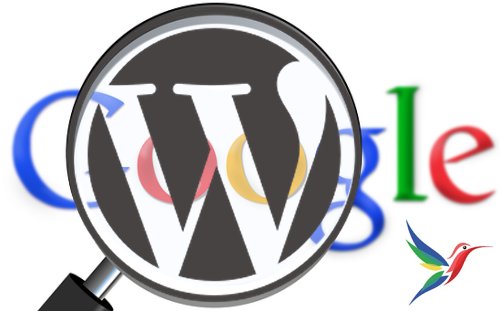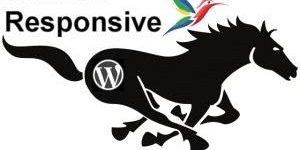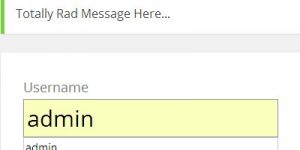Comment on WordPress SEO Tutorial by SEO Dave.

Google changes it’s search engine algorithm all the time, sometimes it’s a small change and other times it’s big. Either way what worked that was SEO whitehat a few years ago generally still works for the most part today, Google does not throw the baby out with the bath water, it tweaks the search algorithm over time for better results for it’s users.
The domains the author of the article you linked to are pretty much duplicate content sites (they are content farms). Google is renowned for hating thin content sites like these, and though those particular sites do add value (tiny amount) to the duplicate content it still is duplicate content. Why should a copied version of an article rank higher than the original?
Since Google is always trying to improve it’s results I can see a very strong argument for downgrading that type of site (have you seen http://googleblog.blogspot.com/2011/02/finding-more-high-quality-sites-in.html ) and just a small downgrade for finding duplicate content can have a major impact on SERPs (dropping from top 5 to top 10 is a big deal). You also find with the bigger Google updates if a change has resulted in a lot of good sites loosing their rankings the algorithm is presumably re-tweaked so the negative impacts aren’t as severe (sites go down in rankings with the first change and back up with the re-tweak). Occasionally Google is going to go too severe in an algo change and have to dial it back a bit.
The reason for those sites being downgraded is because they are content farms and that was what the Panda update was targeting. Do you run content farms? I don’t, so shouldn’t be affected negatively by Panda (which my network wasn’t).
Some of the SEO advice within the article is bad SEO advice.
Nofollow deletes link benefit.
Noindex wastes link benefit.
Never use nofollow or noindex unless you absolutely have to. The general rule should be if you have a page you don’t want indexing it really shouldn’t exist or at least avoid linking to it. Monthly archive pages for example, what do they add to a website?
Fortunately for the three domains he analyses they are not short of backlinks, so though it will have a negative impact it’s to some degree mitigated by the number of backlinks.
Deleting tags/categories/archives that are not useful is damn good SEO advice. You should aim for a site that every page on the site is targeting one or more SERPs so the link benefit flowing to those pages are doing something useful. In practice this isn’t always practical, but if you keep it in mind you’ll do far better in Google than if you create pages for the sake of it. If you follow this advice there should be no need to nofollow/noindex categories/tags etc… Never nofollow links to pages on your own sites, that’s dumb because it deletes the link benefit, I’d rather have the link benefit flow through a monthly archive page than delete the link benefit completely.
Unfortunately there’s no easy way to have multiple archive pages (page 2, 3, 4… of a category/tag) and not pass link benefit through them (Update: Stallion Responsive deals with this without using noindex or nofollow). If you nofollow them the link benefit is deleted (that’s nuts) and if you noindex them the link benefit though not deleted isn’t working on the pages that are noindexed (the link benefit is wasted). Why noindex a page that potentially could rank for something? Google doesn’t penalize sites for having good navigation and without good navigation how will Google naturally find your deeper content? However it doesn’t reward sites for have multiple archives that add nothing to a site, I never use monthly archives and generally if there’s an argument for having a tag there’s a better argument for having a category (my sites tend to only have category archives : there’s no real difference between a tag and a category).
Fixing broken links and redirecting pages that are no longer present but have backlinks to them, very good SEO advice, it stops the link benefit from being wasted.
Blocking the indexing of WordPress login pages not really necessary with the current blocking options available in all WordPress themes except mine. The choice is do you leave the link as is and it’s wasted link benefit or do you nofollow/noindex the login page and the link benefit is wasted? Not a lot to gain SEO wise either way for most WordPress users, though some login pages do link back to the home page so not all the link benefit is wasted: note for my theme users I’ve hidden the login/admin links from search engines, so not an issue for those users.
Although I don’t recommend using nofollow/noindex, I do have a way to block the wasting of SEO benefit through archive pages, but need to find the time to make it into an SEO plugin or part of Stallion (Update: part of Stallion Responsive). My plans are along the lines of noindex, but the link benefit isn’t wasted on the archives that are not indexed.
Regarding the three domains the author of the article analysed can you think of any reason why deleting link benefit (nofollow) and wasting link benefit (noindex) would result in better Google rankings?
BTW Traffic to my network of sites went up after the Panda update, so the SEO techniques I use and recommend appear to work better after the Panda update. I have never used noindex and have been removing nofollow links from my sites, had loads of nofollow links when Google didn’t delete link benefit, takes time to remove them from around 100 domains. One domain had a fair number of nofollow links, removed them all recently and traffic is up a bit since.
David


More Comments by SEO Dave
WordPress SEO Techniques
How to Noindex Paged WordPress Categories and Tags
Before I explain how to noindex paged categories and tags, first going to cover some basic SEO misunderstandings.
If you use a WordPress theme like the Stallion SEO Theme your tags, categories and other WordPress archives will use post excerpts. Have …
Continue Reading WordPress SEO Guide
WordPress SEO Techniques
WhiteHat SEO PR Sculpting : WordPress SEO of Categories Siloing
1,200+ posts in only 8 categories averages at 150 posts per category IF you have them spread evenly (which you won’t).
With the standard 10 posts per category that’s 15 pages deep, unless you have a high PR site (loads of …
Continue Reading WordPress SEO Guide
WordPress SEO Techniques
Whitehat SEO PR Sculpting : Delete WordPress Tags and Categories with NO Search Engine Traffic
If some WordPress tags get search engine traffic keep them and keep the same layout, but delete the tags that get no traffic.
This way your tags with traffic loose no internal backlinks and you waste no link benefit on tags …
Continue Reading WordPress SEO Guide
WordPress SEO Techniques
WordPress SEO Categories and Tags Optimization
I don’t use WordPress Tags because in structure they are the same as Categories.
A lot of webmasters overload their sites with Tags/Categories which means they need more link juice to power their sites SEO. You want most of your SEO …
Continue Reading WordPress SEO Guide
WordPress SEO Techniques
Google Sitelinks and Meta Descriptions Tag
For both questions I’ve not done anything special to achieve this, left it to Google to automatically set the meta description and the Google sitelinks. So what you see is what Google thinks are the best meta descriptions and sitelinks.
Stallion …
Continue Reading WordPress SEO Guide
WordPress SEO Techniques
SEO Impact of Font Sizes
That requires editing CSS files, each colour scheme and layout have their own CSS files, one for the colour scheme and one for the layout, the current two files your site uses are
/wp-content/themes/stallion-seo-theme/colors/layout-310r.css (layout)
/wp-content/themes/stallion-seo-theme/colors/style-brown.css (colour scheme)
So those are the two …
Continue Reading WordPress SEO Guide
WordPress SEO Techniques
WordPress Category Excerpts
The WordPress excerpt replaces the default snippet of text you see, the links to the post remain. So just a way to make your categories unique/SEO’d.
I’m sure there are ways to replace the category with custom content and a link …
Continue Reading WordPress SEO Guide
WordPress SEO Techniques
SEO of WordPress Categories
WordPress categories can gain SERPs in their own right, I link to my categories all the time from relevant pages. What I link to/from is based on what the content I’m linking from, regularly link directly to categories on other …
Continue Reading WordPress SEO Guide
WordPress SEO Techniques
WordPress Static Pages
If you want articles not to show on the home page you have the option of using WordPress Static Pages (“Pages >> Add New” instead of “Posts >> Add New”).
Static Pages (like an About Page) are only added to the …
Continue Reading WordPress SEO Guide
WordPress SEO Techniques
Matt Cutts – Google Over SEO Optimized Ranking Algorithm
Listened to the Podcast, lets see if I can link it direct in a comment for others to listen to:
Information from the PodCast:
All those people doing, for lack of a better word, over optimization or overly SEO – versus those …
Continue Reading WordPress SEO Guide
WordPress SEO Techniques
Social Media Metrics and Over SEO Optimized Sites
Which Matt Cutts talk was you listening to?
I have to admit I don’t like using social media for promotion, to date it’s been severely disappointing, I’ve got thousands of Twitter followers and auto Tweet many sites, have around 2,500 Google+ …
Continue Reading WordPress SEO Guide
WordPress SEO Techniques
WordPress Themes and Search Engine Optimization of Headers, H1, H2, H3, H4
There’s no hard rules on the exact number and ratio of headers to use because the larger an article more scope for header usage, you wouldn’t add 10 different headers (various H*s) to a 250 word post for example, but …
Continue Reading WordPress SEO Guide